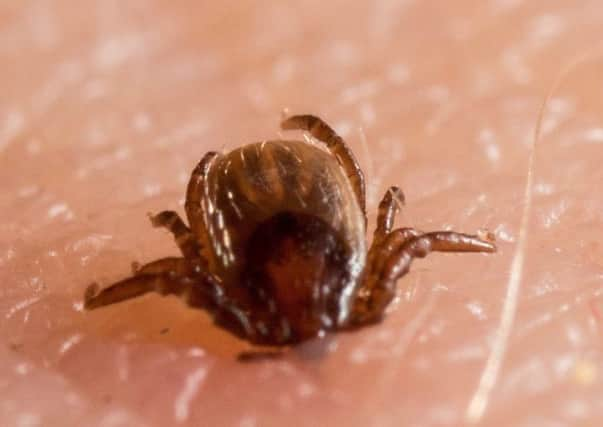GPs told to look out for symptoms of Lyme disease as cases ‘increase rapidly’


Lyme disease was found in every UK region and may be three times more common than the current annual estimate. Researchers from the UK and Germany looked at a primary care database holding anonymised records of 8.4 million people registered with GP practices between 2001 and 2012 – about 8 per cent of the general population.
Some 4,083 cases of Lyme disease were detected among 4,025 patients.
Advertisement
Hide AdAdvertisement
Hide AdOf these, 1,702 (41.7 per cent) had “clinically diagnosed” Lyme disease, 1,913 (46.9 per cent) had “treated suspected” Lyme disease, and 468 (11.5 per cent) had “treated possible” Lyme disease.
Scotland had the highest number of Lyme disease cases, with more than one in four – 1,104 or 27 per cent.
The high numbers in Scotland could be explained by “its wetter climate and popularity as a hiking destination”, researchers said.
Scotland’s chief medical officer wrote to doctors at Scottish hospitals and surgeries only last month urging for them to watch for symptoms linked to Lyme disease.
They found the annual total number of cases recorded increased almost ten-fold over the period from 60 to 595, suggesting a UK estimate of 7,738 cases in 2012.
Lyme disease has become the most common tick-borne infection in many parts of Europe and the USA and high rates in nearby countries had prompted fears the current UK estimate was too low.
The bacterial infection is spread to humans via bites from infected ticks, and symptoms can include a circular red rash often described as a bullseye on a dartboard.
Some people get flu-like symptoms instead of the rash, and if it is not treated promptly with antibiotics it can cause pain and swelling in joints, nerve and heart problems and trouble concentrating for years after. The current official estimate for the UK is around 2,000 to 3,000 new cases of Lyme disease annually based on centralised reporting in Scotland and laboratory data in England and Wales.
Advertisement
Hide AdAdvertisement
Hide AdExperts say prevention is the best way to ward off the disease, urging people to avoid dense vegetation, tuck their trousers into their socks and use tick repellents.
Study author Dr Victoria Cairns said: “The issue is really for the public to know so that they go to the GP to get diagnosed.”